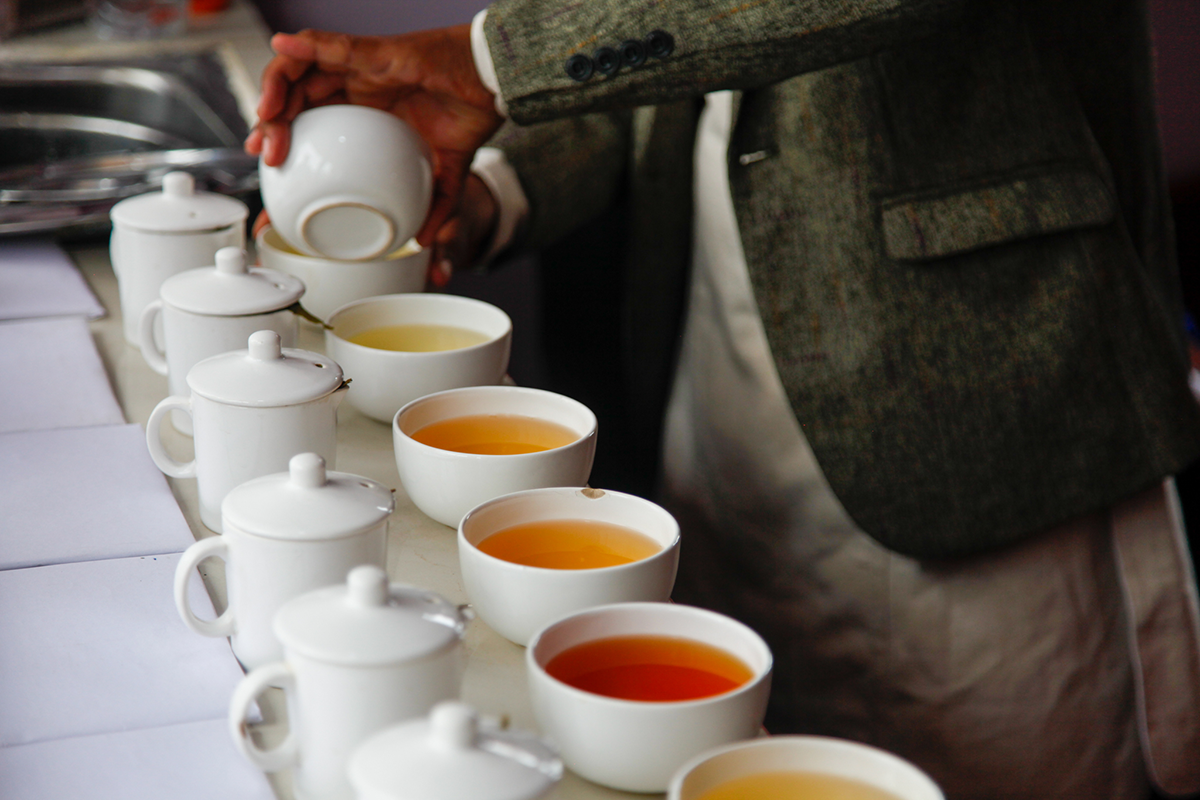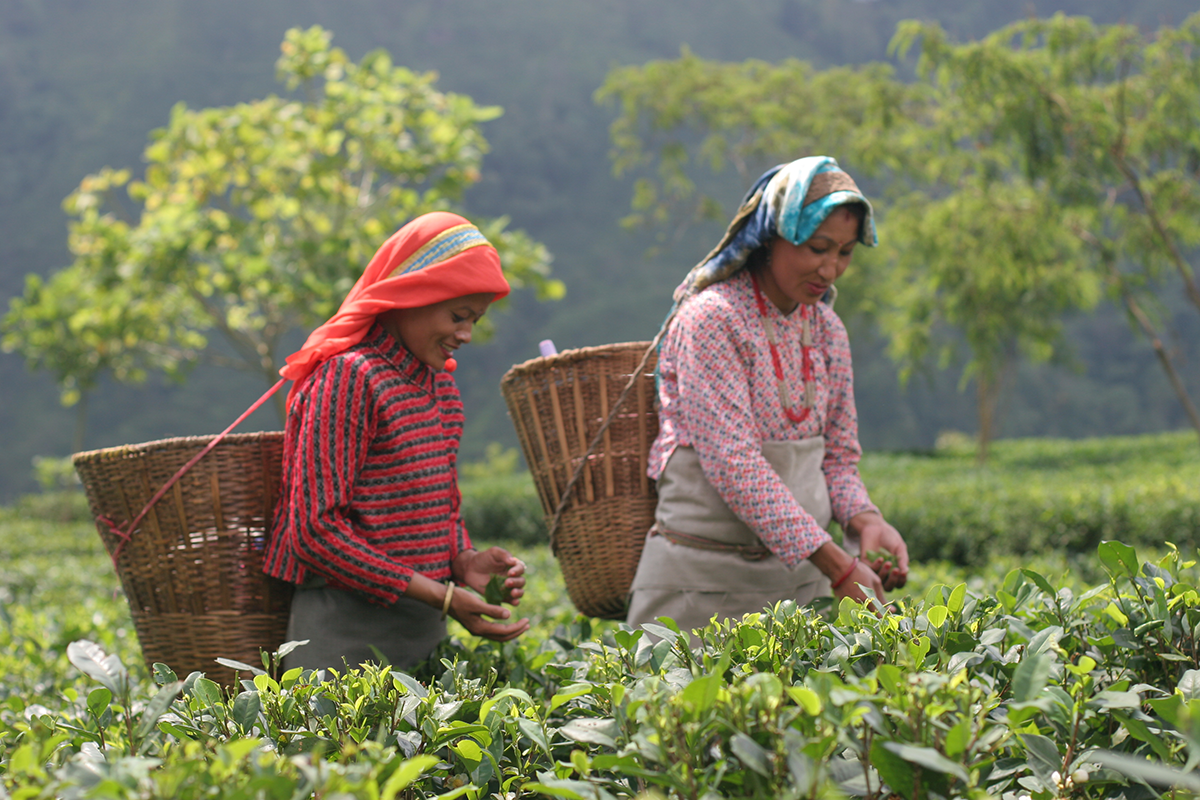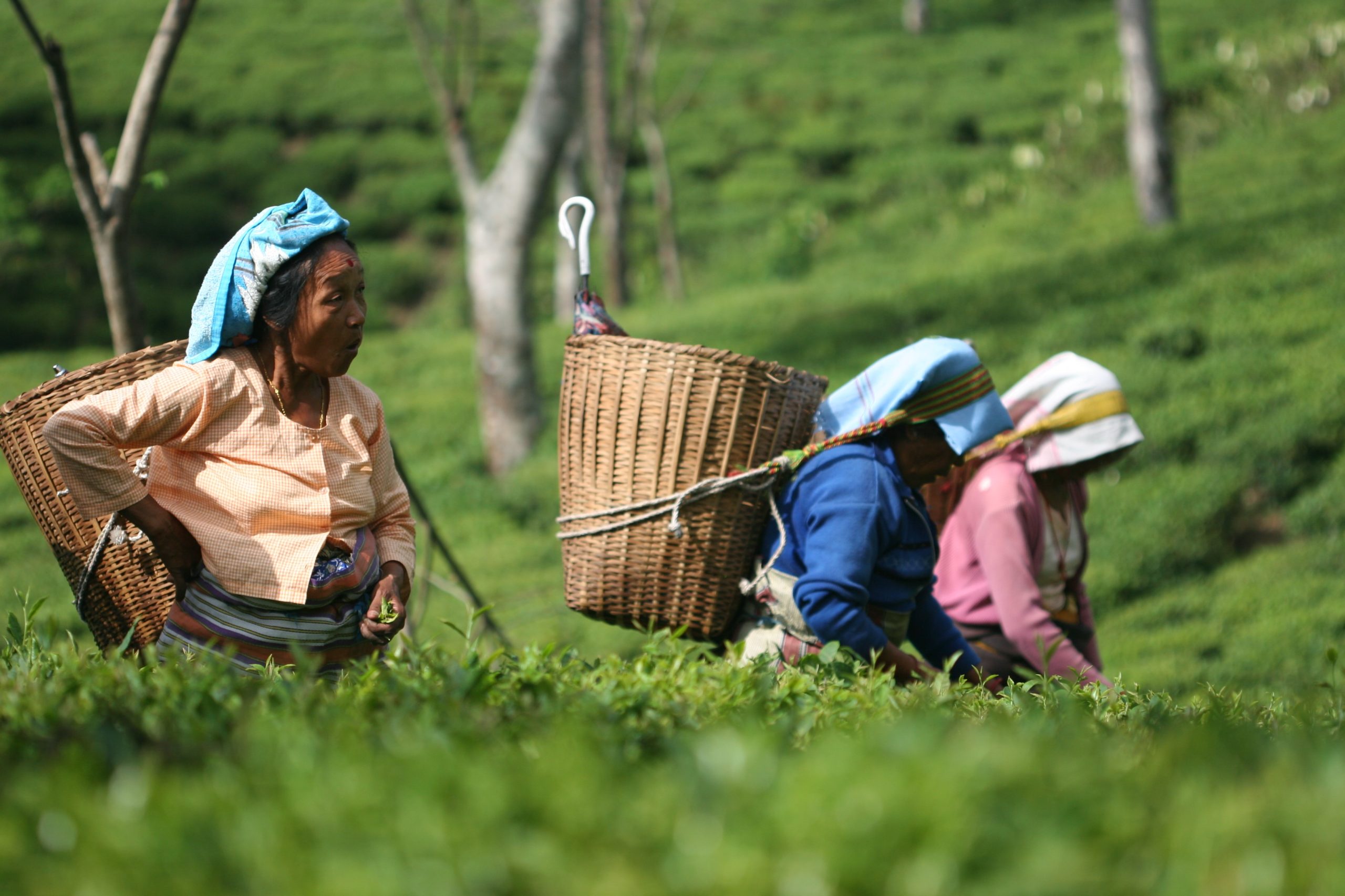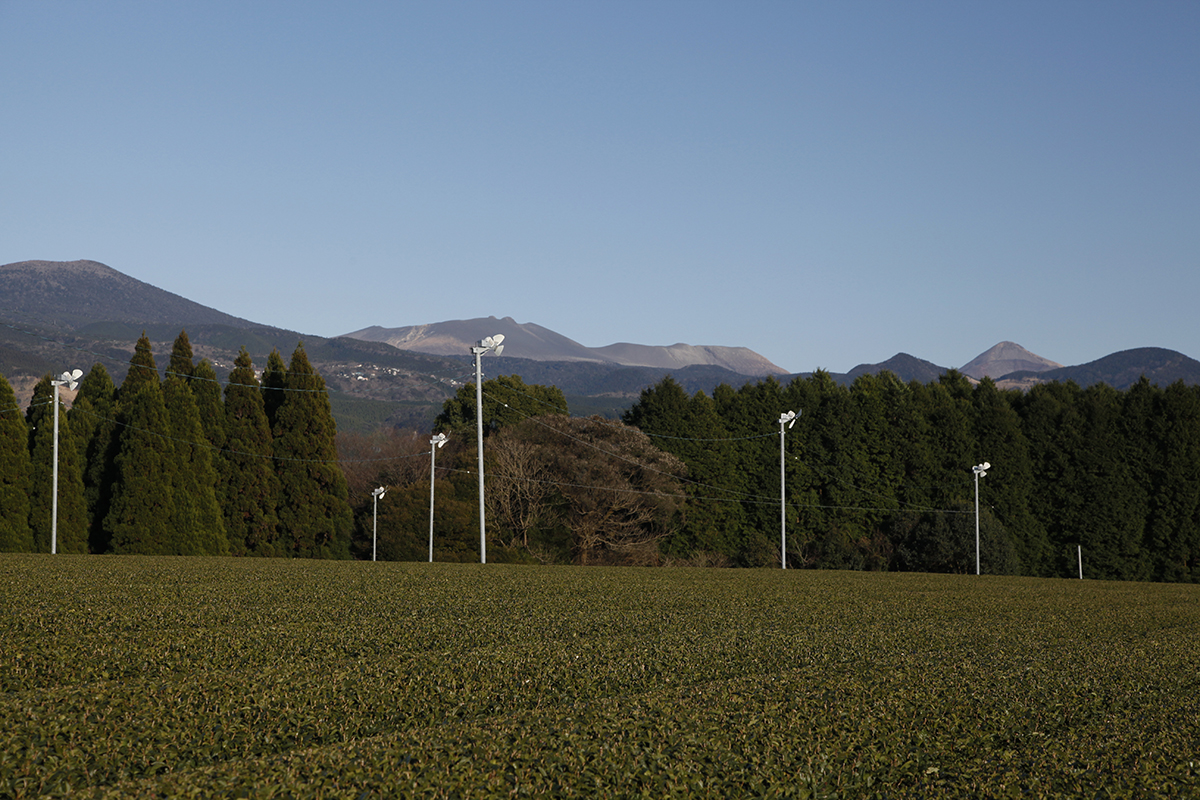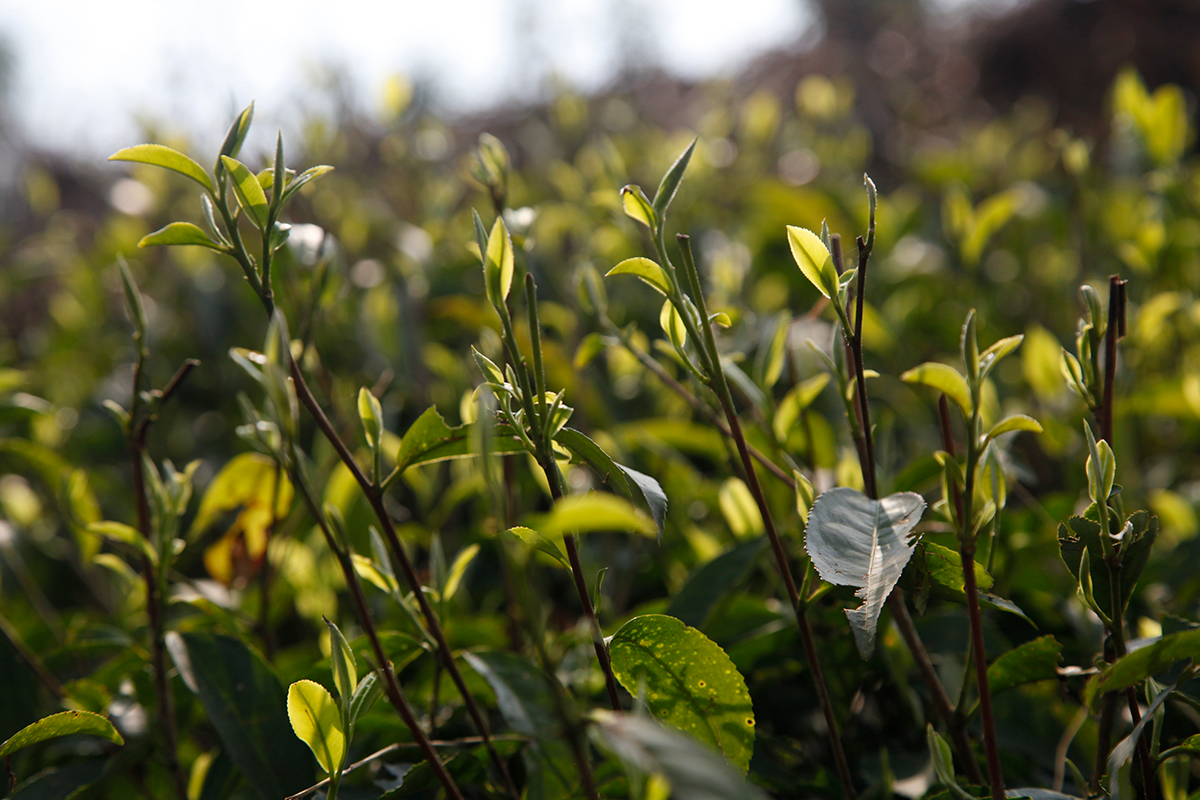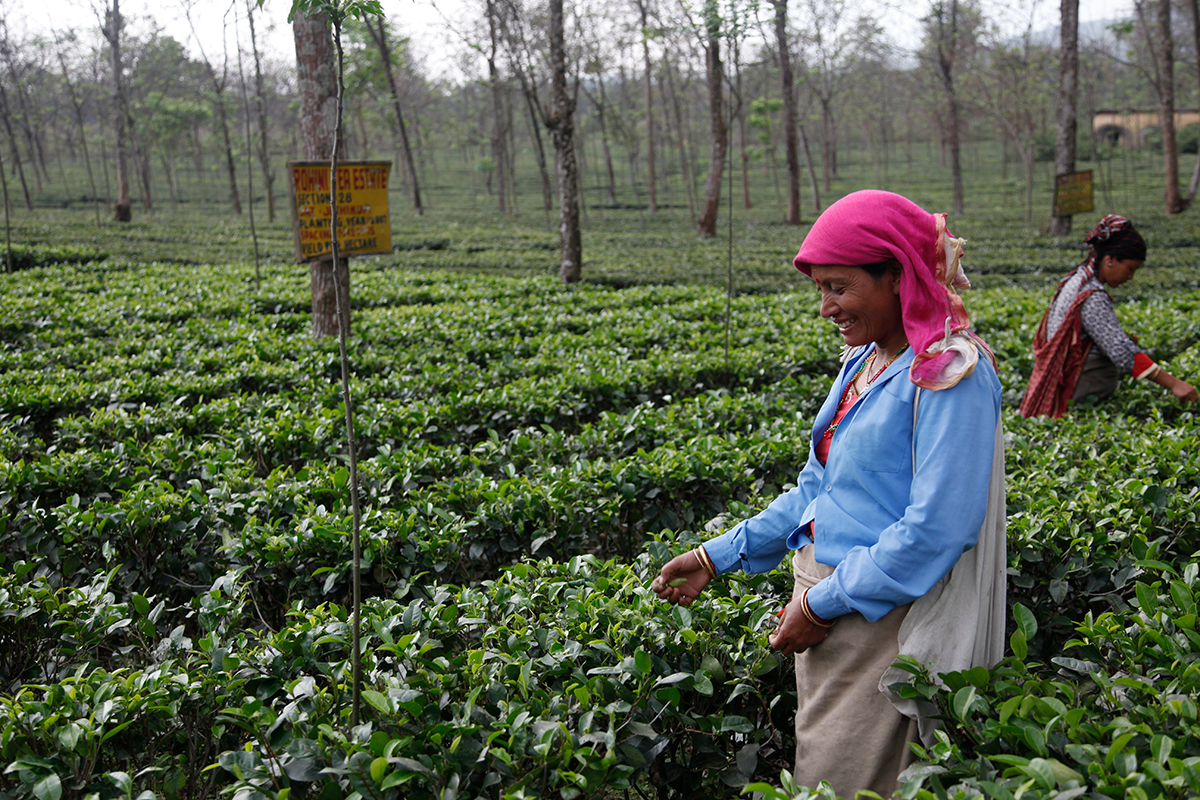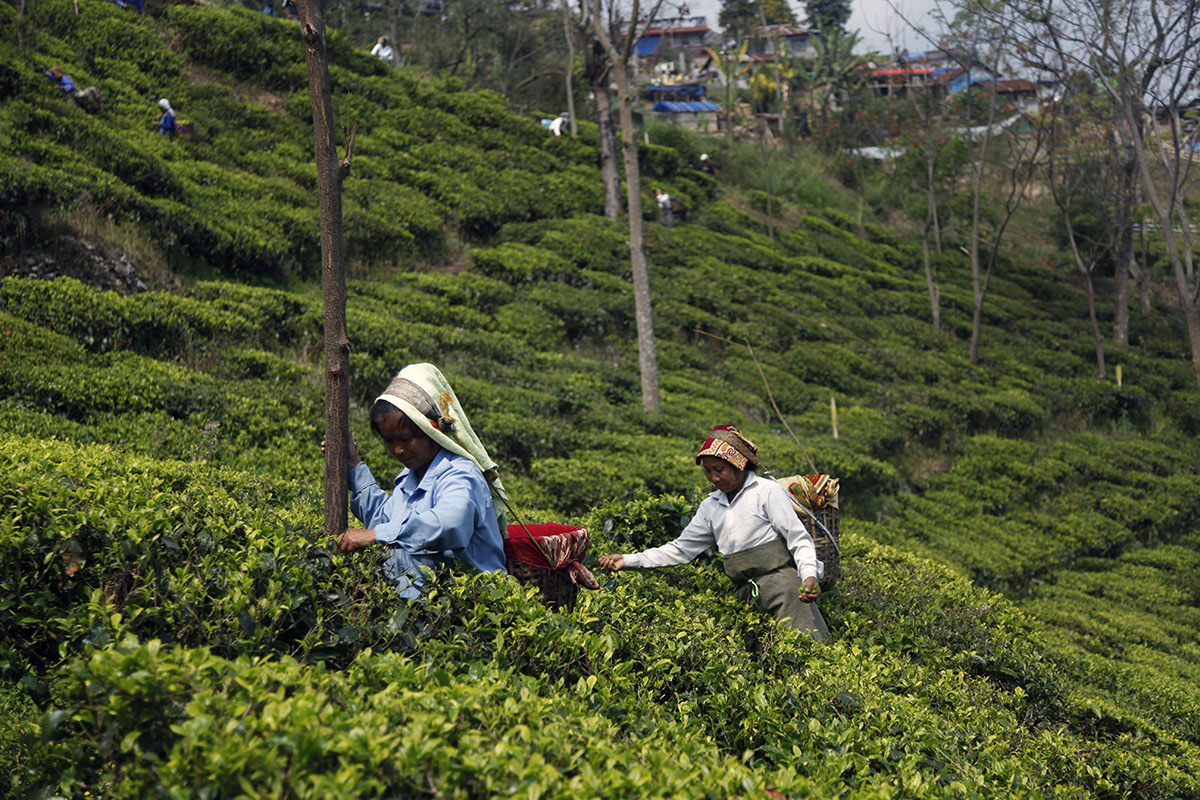The first tea of the year to reach Paris from the Himalayan foothills is always a highlight. In terms of the world’s most prestigious tea regions, Darjeeling is where the tea bushes come out of dormancy first, ahead of China and Japan. This year, the first tea to reach us is a Puttabong DJ1. DJ1 means it’s the first batch produced this year. Puttabong is special because it was the first tea garden planted by the British in the mid-19th century in this region on the borders of Tibet, Nepal and Bhutan. This first tea from the first garden is fresh and floral with subtle aromas of vanilla, zest and almond. A good start to the year.
First-flush teas
Six months without rain
In early spring, the first young shoots appear on the tea bushes. Here in Darjeeling, they arrive after a long winter when the camellia plant goes into dormancy. This lasts for about four months, from mid-November to early March, depending on the weather conditions.
This year, the Himalayan foothills, where the British decided to grow tea less than two centuries ago, have experienced a drought. Six months with little or no rain due to climate change, linked by some to global warming, by others to deforestation. The consequences are reflected in the figures and by mid-March, production was expected to be half of last year’s. However, there are no concerns when it comes to quality. Slow growth results in higher quality and more intense aromas and flavours.
The Darjeeling marathon
Every year, we tea sommeliers are subjected to a marathon: the Darjeeling spring harvests. Samples of new-season teas from the region arrive in bags of ten, twenty or thirty. You must taste them within half a day if you want to be in with a chance of getting hold of the tea. The sooner you buy, the more expensive it is, but the longer you wait, the more you run the risk of missing out on the teas you want. This process, which only takes place for Darjeeling because sales go to the highest bidder and batches don’t exceed a few dozen kilos, lasts about six weeks. By the end, the entire spring production has been sold and the tea bushes, distressed by three consecutive harvests, take a rest before resuming their growth. An observation at this point: every year, these teas are worth more and more. Yet all the gardens in Darjeeling claim to be losing money due to rising production costs, and the increases don’t appear to benefit the pickers. The Mckinsey audits, which were so maligned on the eve of the election, would be invaluable in shedding light on this mystery.
Taking time out for spring
In a turbulent world, it’s good to take time out for tea. As spring approaches, bringing with it the first flowers and fresh green shoots, let’s taste those that have just arrived from the Himalayas. The earliest Camelia sinensis plants are growing again on the foothills of this famous mountain range and the tea season is just beginning in Darjeeling. After a harsh winter and a long dormancy, the tea bushes are awakening. The youngest leaves picked from the end of each stem develop floral, almond and herbaceous aromas in the cup.
I’ve just bought a batch of Rohini Early Spring Ex 4 and of Millikthong Early Spring Ex 2. Once they arrive in France and are sent to the lab for analysis, according to our Safetea™* process, they will be available. These teas will offer a moment’s pause, the scent of spring, and a brief respite from the tumult of the world.
*Palais des Thés is committed to offering its customers only certified organically grown teas or teas that have been analysed in an independent laboratory to ensure they comply with European legislation.
In Darjeeling, the first harvests aren’t the best
This year is unlike any other and I have no idea how it will play out in terms of the growing, shipping and availability of premium teas. I’ve just heard from Darjeeling that the very first batch has been harvested. Those of you who’ve been following me for a long time, including fans of first-flush Darjeelings, know that you shouldn’t rush into these things. In this region, the low-altitude plantations are the first to harvest their leaves, as they benefit sooner from milder temperatures. As they warm up, the higher gardens start picking too. The longer the period of dormancy, the slower the sap rises, leading to a greater concentration of essential oils in the leaves. This gives those gardens that harvest later the advantage of quality.
Mr Matsushita’s Shoju tea
The difference between the climate in the north and south of Japan, combined with the cultivars used in the country, some of which are earlier than others, mean the spring teas vary greatly in terms of when they become available. Traditionally, the well-known Japanese Ichibanchas are picked and processed at the start of May. But with global warming and the new cultivars being used by farmers branching out from the traditional Yabukita, some harvests are taking place earlier in the year. For example, Mr Matsushita’s Shoju, produced using an early tea cultivar grown on the island of Tanegashima, in the south of the archipelago, is already available. It has floral, vegetal and iodine notes. A foretaste of open horizons, and a pure delight.
SafeTea™, our safety system
Two weeks ago I promised you that a wonderful Rohini Early Spring would be arriving, and that it would be available after the obligatory food safety analyses. Sadly, we must wait a little longer. At Palais des Thés we follow our own special procedure, called SafeTea™, which guarantees that our teas meet the optimal food safety standards. We carry out random tests on our organically certified teas (AB label). For all other teas we sell, we ensure they comply with our standards by having them analysed by an independent laboratory. Our checks go beyond the legal requirements. But this does mean we have to wait a few days longer while the tests are being carried out, to ensure the safety of our teas.
Rohini Early Spring, a premium tea from cultivar B157
In Darjeeling, tea grows at altitudes ranging from 100 to 2,100 metres. The lower-grown teas are harvested first, of course, because of the milder temperatures they enjoy. Remember, tea plants enter dormancy when daytime temperatures remain below 12°C.
I’ve just bought a batch of Rohini Early Spring. It’s a delicious tea, and it’s special too, not so much because of the location of the plantation, but because of the quality of the cultivar, B157 (Bannockburn 157). It’s also unusual in that the plot is entirely planted with this cultivar, whereas many sections on Darjeeling plantations are made up of a patchwork of different tea varieties. The planter – who is well aware that his garden isn’t among the best-known names – is hugely creative when it comes to developing rare teas. He really takes care with the processing part, adjusting every parameter (intensity of withering, rolling, oxidation, drying) until he obtains the exact liquor he wants. This is a wonderfully delicate premium tea with a powerful grassiness and intense freshness. It will be available around 22 March, following the necessary food safety tests.
Hooray!
Today, I’m only going to focus on the good news! I bought three very rare batches of Darjeeling produced this spring. Nepal has continued to produce tea during lockdown, and as soon as the French postal system is functioning again I will receive some delicious samples. In China, a pre-Qing Ming Huang Shan Mao Feng, a Lu Shan Yun Wu, a Yue Xi Cui Lan and a rare Huo Shan Huang Ya are already on their way. In Japan, after a winter that was long but relatively mild, the harvests are a little late. By mid-May I will have received all the samples and will be able to make a good selection. And to top it all, each of the teas I buy will be sent to the lab before we sell it, to ensure it complies with European standards – unless it already has French “AB” organic certification. This means we can enjoy them with peace of mind, and appreciate all their benefits.
The joy of singing
They haven’t seen one for nearly twenty years – a rainy winter. For almost two decades, planters constantly complained about the dryness in January or February, or both. In 2017 the weather really was against them: not a single drop of rain fell between October and March. At last, in 2020, the region was treated to magnificent rainfall all winter. But water isn’t everything. For the leaves to grow, they need heat too. And this year, it’s too cold for them.
While we wait for the soil to warm up, we’re tasting last year’s teas again, to remind ourselves of them, as well as the few low-altitude batches that have been freshly produced in miniscule quantities. Meanwhile, the pickers keep themselves happy by singing.

